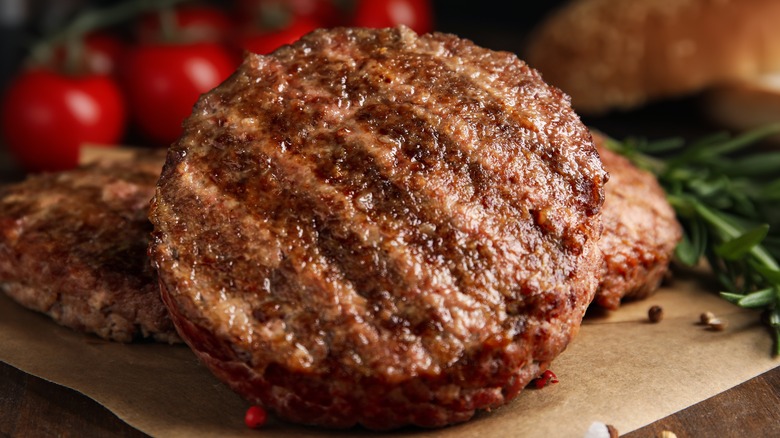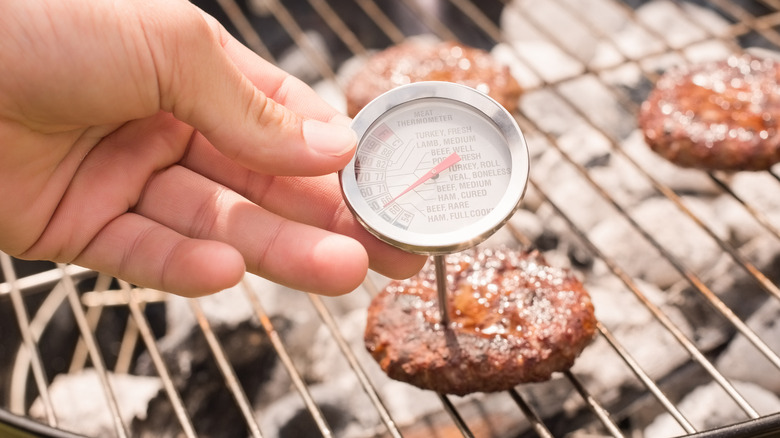Why You Shouldn't Rely On Visual Cues To Tell If Your Hamburger Is Done
A lot of pressure can go into cooking a hamburger. Cooking one for yourself is no big deal. But cooking for a crowd can be a nerve-wracking experience, especially when your father-in-law is the grill king who has three different smokers and has a legendary burger recipe. In the midst of round-the-grill chit-chat, you need to keep an eye on those globs of meat to make sure they don't turn into unappetizing hockey pucks. One of the worst mistakes you can make with a burger is overcooking it. Not only does it become completely unappetizing, but overcooked meat can actually be tougher for people to digest, per The Joyful Table.
How, then, can you judge when the burgers are done? Surely you can just use your eyes. Once they're all brown on the outside they're good to go, aren't they? Not necessarily. Relying solely on visual cues to gauge if burgers or any meat, are done is a mistake. According to the Food Network, it's actually an unhealthy habit that people regularly display in the kitchen. It can be easy to disregard the validity of cooking temperatures, especially if you're one who likes a burger on the pinker side. It is nevertheless important to understand that looks can be misleading. Two methods can solve this problem. One is easy and accurate, while the other's a bit shower.
Testing for doneness
Why is eyeballing a bad idea? The USDA says that roughly a quarter of hamburgers are underdone and under safe eating temperatures even after turning brown. The fastest, easiest, and most accurate way to test for doneness is to utilize a meat thermometer to check the burger's internal temperature. Meat thermometers also eliminate the need to mutilate a burger in order to see if the middle is cooked. The USDA lists a minimum of 160 degrees Fahrenheit as the safest temperature at which to eat a hamburger. This is the internal temperature of a well-done burger.
There is another method that's fun to use if you are looking to show off a bit. It's called the "finger test," and while it takes a little practice, it's apparently pretty darn accurate. With a clean finger, lightly press into the center of the burger. Compare the meat's firmness to that of the muscle below your thumb on your opposite hand. When the thumb and forefinger are touching, it matches the firmness of a rare burger. When touching the thumb to each successive finger (middle to pinky), the muscle will tighten. The tighter it is, the more similar it feels to well-done meat in terms of firmness (via Country Living).
Of course, you certainly don't want to depend on the finger test entirely, especially if you're new to it. Having a meat thermometer is the best way to secure a safe-to-eat burger without relying on your (potentially) lying eyes.

